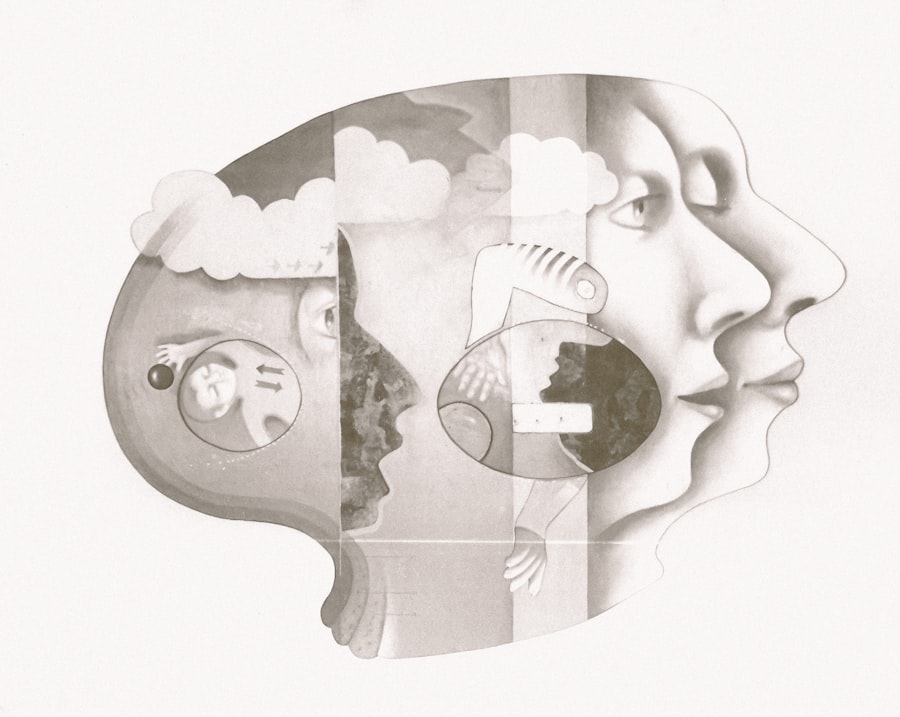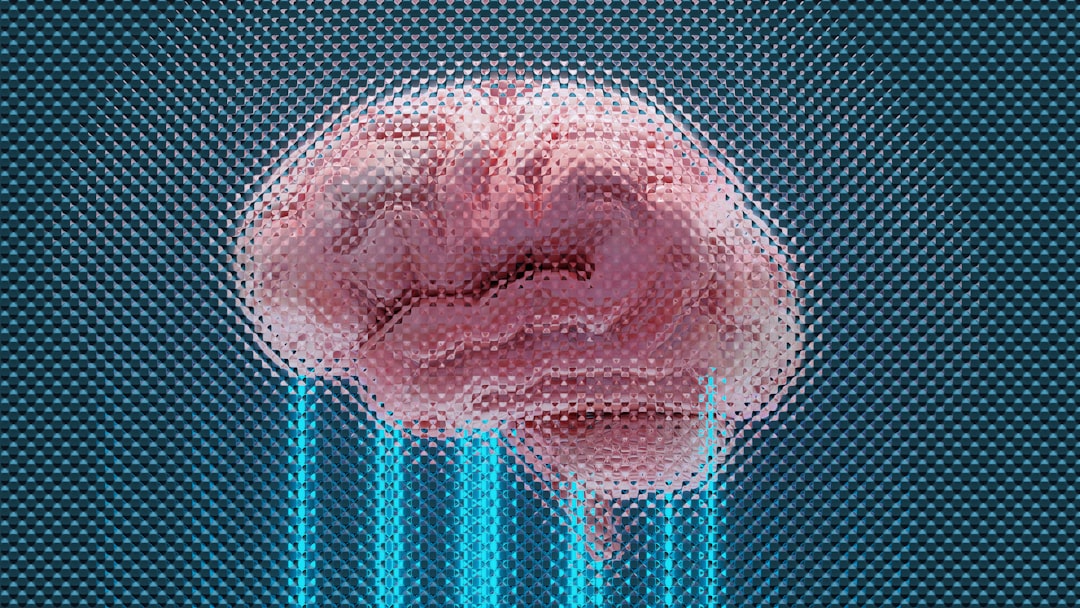The concept of brain plasticity, or neuroplasticity, is a fascinating area of study that reveals the brain’s remarkable ability to adapt and reorganize itself throughout your life. This adaptability means that your brain can form new connections and pathways in response to learning, experience, and even injury. Understanding this phenomenon is crucial because it empowers you to take control of your cognitive development.
By recognizing that your brain is not a static organ but rather a dynamic one, you can actively engage in practices that promote growth and improvement. Neuroplasticity occurs at various levels, from cellular changes to large-scale cortical remapping. When you learn a new skill or acquire knowledge, your brain creates new synapses and strengthens existing ones.
This means that every time you challenge yourself intellectually or emotionally, you are essentially rewiring your brain. Embracing this understanding can motivate you to seek out new experiences and challenges, knowing that each effort contributes to your cognitive resilience and overall mental health.
Key Takeaways
- The brain’s plasticity allows it to change and adapt throughout life, making it possible to learn new skills and improve cognitive functions.
- Cognitive flexibility can be developed through activities such as learning a new language, playing musical instruments, or engaging in problem-solving tasks.
- Memory and recall can be enhanced through techniques such as mnemonic devices, spaced repetition, and regular physical exercise.
- Improving focus and concentration can be achieved through mindfulness practices, minimizing distractions, and setting specific goals.
- Cultivating creative thinking involves activities such as brainstorming, mind mapping, and engaging in diverse experiences to stimulate the brain.
Developing Cognitive Flexibility
Cognitive flexibility is the ability to adapt your thinking and behavior in response to changing circumstances. It allows you to switch between different tasks or thoughts seamlessly, which is essential in today’s fast-paced world. To develop this skill, you can start by exposing yourself to diverse perspectives and ideas.
Engaging in discussions with people who have different viewpoints can help you learn to appreciate alternative ways of thinking, thereby enhancing your cognitive flexibility. Another effective way to cultivate cognitive flexibility is through problem-solving exercises that require you to think outside the box. For instance, when faced with a challenge, try brainstorming multiple solutions instead of settling on the first one that comes to mind.
This practice not only broadens your thinking but also encourages you to consider various angles before arriving at a conclusion. By consistently challenging your thought processes, you can train your brain to become more adaptable and open-minded.
Enhancing Memory and Recall

Memory is a fundamental aspect of cognitive function that influences how you learn and interact with the world. To enhance your memory and recall abilities, it’s essential to employ techniques that promote retention and retrieval of information. One effective method is the use of mnemonic devices, which are memory aids that help you associate new information with familiar concepts.
For example, creating acronyms or visual imagery can make it easier for you to remember complex information. Additionally, regular practice of retrieval techniques can significantly improve your memory. Instead of passively reviewing material, actively test yourself on what you’ve learned.
This could involve quizzing yourself or teaching the material to someone else. The act of recalling information strengthens neural connections, making it easier for you to access that information in the future. By incorporating these strategies into your daily routine, you can enhance your memory and recall capabilities.
Improving Focus and Concentration
| Technique | Description | Effectiveness |
|---|---|---|
| Mindfulness Meditation | Practicing focused breathing and awareness of the present moment | High |
| Regular Breaks | Taking short breaks to rest and recharge the mind | Moderate |
| Eliminating Distractions | Removing or minimizing external distractions in the environment | High |
| Physical Exercise | Engaging in regular physical activity to improve overall focus | Moderate |
In an age filled with distractions, improving focus and concentration has become increasingly important. To sharpen your attention span, start by creating an environment conducive to concentration. This might involve decluttering your workspace, minimizing noise, or using tools like noise-canceling headphones.
By eliminating distractions, you create a space where your mind can fully engage with the task at hand. Another effective strategy is the practice of time management techniques such as the Pomodoro Technique. This method involves working in focused bursts followed by short breaks, allowing your brain to recharge while maintaining productivity.
During these focused intervals, commit to single-tasking rather than multitasking; this will help you concentrate better and produce higher-quality work. By implementing these practices, you can significantly enhance your ability to focus and concentrate on tasks.
Cultivating Creative Thinking
Creative thinking is not just reserved for artists or innovators; it’s a skill that everyone can develop.
Engage in activities that inspire you—whether it’s painting, writing, or brainstorming new concepts—without worrying about the outcome.
This open-minded approach fosters an environment where creativity can flourish. Additionally, seeking inspiration from various sources can stimulate your creative thinking. Read books outside your usual genre, attend workshops, or immerse yourself in different cultures.
Exposure to diverse experiences can spark new ideas and perspectives that enhance your creative process. Remember that creativity often thrives in moments of playfulness and experimentation; don’t be afraid to take risks and embrace the unexpected.
Managing Stress and Anxiety

Stress and anxiety are common challenges that can hinder cognitive performance and overall well-being. To manage these feelings effectively, it’s essential to develop coping strategies that work for you. One effective approach is engaging in regular physical activity, which has been shown to reduce stress levels and improve mood.
Whether it’s going for a walk, practicing yoga, or participating in team sports, find an activity that you enjoy and make it a part of your routine. In addition to physical activity, practicing relaxation techniques such as deep breathing or progressive muscle relaxation can help alleviate stress and anxiety. These methods encourage mindfulness and bring your focus back to the present moment, allowing you to detach from overwhelming thoughts.
By incorporating these strategies into your daily life, you can create a more balanced mental state that enhances your cognitive abilities.
Boosting Problem-Solving Skills
Problem-solving skills are essential for navigating life’s challenges effectively. To boost these skills, start by approaching problems with a positive mindset. Instead of viewing obstacles as insurmountable barriers, see them as opportunities for growth and learning.
This shift in perspective can empower you to tackle challenges with confidence and creativity. Engaging in puzzles and brain games is another excellent way to enhance your problem-solving abilities. Activities like Sudoku, crosswords, or logic puzzles stimulate critical thinking and encourage you to think analytically.
Additionally, consider collaborating with others on problem-solving tasks; group discussions often lead to innovative solutions that you might not have considered on your own. By actively seeking out opportunities to practice problem-solving, you can sharpen this vital skill over time.
Harnessing the Power of Visualization
Visualization is a powerful technique that can enhance performance in various areas of life, from sports to public speaking. By mentally picturing yourself achieving a goal or successfully completing a task, you create a mental blueprint that prepares your brain for real-life execution.
When visualizing, engage all your senses—imagine not only what success looks like but also how it feels and sounds. This multisensory approach makes the visualization more impactful and helps reinforce positive outcomes in your mind. Over time, this practice can boost your confidence and motivation while improving your ability to achieve your goals.
Practicing Mindfulness and Meditation
Mindfulness and meditation are practices that have gained popularity for their numerous cognitive benefits. By focusing on the present moment without judgment, mindfulness helps reduce stress and enhances overall mental clarity. To incorporate mindfulness into your daily routine, start with short meditation sessions where you focus on your breath or observe your thoughts without attachment.
As you become more comfortable with mindfulness practices, try integrating them into everyday activities—whether it’s eating, walking, or even washing dishes. Being fully present during these moments allows you to cultivate awareness and appreciation for the simple aspects of life while improving your concentration skills. Regular practice of mindfulness can lead to greater emotional regulation and improved cognitive function over time.
Utilizing Brain-Training Exercises
Brain-training exercises are designed to enhance cognitive abilities through targeted activities that challenge various aspects of mental function. Engaging in these exercises regularly can help improve memory, attention span, and problem-solving skills. There are numerous apps and online platforms available that offer fun and interactive brain-training games tailored to different cognitive skills.
In addition to digital resources, consider incorporating traditional brain-training activities such as puzzles, chess, or strategy games into your routine. These activities not only stimulate cognitive function but also provide an enjoyable way to challenge yourself mentally. By making brain training a regular part of your life, you can keep your mind sharp and agile as you age.
Applying Brain Tricks in Everyday Life
Incorporating simple brain tricks into your daily life can significantly enhance your cognitive function without requiring extensive effort or time commitment. For instance, using the “chunking” method when trying to remember information can make it easier for you to retain data by breaking it down into smaller groups or categories. This technique is particularly useful when memorizing numbers or lists.
Another effective trick is the use of association techniques—linking new information with something familiar can create stronger memory connections. For example, if you’re trying to remember someone’s name, associate it with a visual image or a rhyme that relates to their name. These small adjustments in how you approach learning and memory can lead to substantial improvements in how effectively you process information in everyday situations.
By understanding the intricacies of brain plasticity and actively engaging in practices that promote cognitive flexibility, memory enhancement, focus improvement, creative thinking cultivation, stress management, problem-solving skills boosting, visualization harnessing, mindfulness practicing, brain-training exercising, and applying brain tricks in daily life, you empower yourself to unlock the full potential of your mind. Embrace these strategies as part of your journey toward cognitive excellence; the possibilities are limitless when you commit to nurturing your brain’s capabilities.
If you’re fascinated by the intriguing world of cognitive illusions and how our brains can sometimes deceive us, you might find the article on Brain Tricks particularly captivating. For a deeper dive into similar topics, consider exploring a related article on the same website. You can find more fascinating insights by visiting Hey Did You Know This, where a variety of intriguing topics are covered, offering a broader understanding of how our perceptions can be influenced by various factors.
WATCH THIS! Don’t Believe Everything You Think — Your Brain Is A Master Trickster!
FAQs
What are brain tricks?
Brain tricks are activities or exercises that challenge the brain to think in different ways, often involving perception, memory, or problem-solving.
How do brain tricks work?
Brain tricks work by engaging different areas of the brain and challenging it to think in new and creative ways. This can help improve cognitive function and mental agility.
What are some examples of brain tricks?
Examples of brain tricks include optical illusions, memory games, puzzles, and riddles. These activities can help improve cognitive skills and keep the brain sharp.
What are the benefits of doing brain tricks?
Engaging in brain tricks can help improve memory, concentration, problem-solving skills, and overall cognitive function. It can also be a fun and enjoyable way to keep the brain active.
Are brain tricks suitable for everyone?
Yes, brain tricks are suitable for people of all ages. They can be particularly beneficial for older adults in maintaining cognitive function and preventing cognitive decline.
How often should one do brain tricks?
There is no set rule for how often one should do brain tricks, but incorporating them into a regular routine, such as a few times a week, can be beneficial for maintaining brain health.
